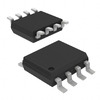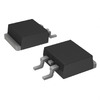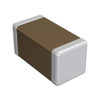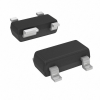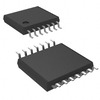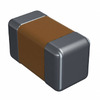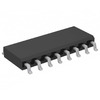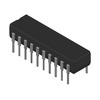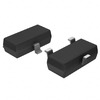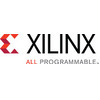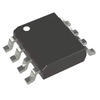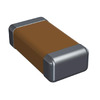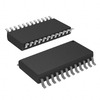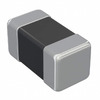A Comprehensive Guide to the TP4056 Module
This article delves deep into the core of technological advancements, focusing on the TP4056 charging module, an important tool in the battery management landscape. We will navigate through the seamless integration of the TP4056 module in various applications, from enhancing portable electronics to crafting DIY battery packs. Each section is crafted to not only inform but also inspire prompting you to reflect on how such technologies shape your everyday life and aspirations.Catalog

Overview of the TP4056 Charging Module
The TP4056 module offers a cost-effective solution for charging single-cell lithium-ion or polymer batteries. This device uses the TP4056 IC to manage the charging cycle via a USB interface or other external power sources, allowing for efficient and safe charging with minimal extra components. At the core of the module, the IC simplifies the charging process by including various safety measures, like over-voltage protection and automatic charge termination. These features are good in preventing battery damage and contributing to device longevity, aligning with on effective battery management.
The module’s versatility makes it suitable for numerous applications, from consumer electronics to portable gadgets, thus proving advantageous in projects where cost efficiency and space-saving are desired. For proper implementation, understanding the thermal characteristics is needed. The IC may generate heat during operation, so incorporating heat sinks or ensuring appropriate ventilation is advisable to aid heat dissipation.
TP4056 Module Specification
|
Specification |
Value |
|
Battery Type |
Lithium-ion |
|
Charge Voltage |
4.2V (fixed) |
|
Maximum Charge Current |
1A (adjustable) |
|
Input Voltage Range |
4.5V to 5.5V |
|
Operating Temperature Range |
-40°C to 85°C |
|
Termination |
Charge termination when current drops to 1/10 of the set
value |
|
Charge Precision |
±1.5% |
|
Standby Current |
<2µA |
|
Package |
SOP-8, DFN-8 |
TP4056 Module Components
Core Aspects of the TP4056 IC
The module's essence lies in the TP4056 IC, known for its accurate voltage and current regulation. This control plays a role in promoting both safe and efficient charging. The IC includes sophisticated overcharge protection, halting the charging process upon reaching capacity, thus nurturing the battery's lifespan and preventing harm.
Protective Circuit Features
The module's protection circuitry not only shields against overcharging but also offers defenses against short circuits. These elements contribute to sustaining the battery's overall health and lifespan. An over-discharge protection mechanism is also incorporated, for battery efficiency, as it prevents discharge beyond safe limits, a frequent issue in battery management.
Charging Status Indicators
LEDs on the module provide immediate visual cues regarding charging status, simplifying the monitoring process. Connectors for both Micro-USB and Type-C allow for easy USB-powered charging. This double compatibility increases adaptability, let you select power sources based on accessibility and preference.
Micro-USB or Type-C Input Options
The connector facilitates the use of the module with a regular USB charger, power bank, or computer USB port by linking it to a USB power source. Depending on the module model, Micro-USB or Type-C can be chosen. Type-C offers a modern and adaptable connection alternative.
TP4056 Pin Connections
Battery Connections
Establish a stable link between the BAT+ and BAT- pins and the battery terminals, fostering a dependable flow of energy. The use of high-quality connectors introduces minimal resistance, promoting optimal performance and smooth operation.
Power Supply Connections
Integrate IN+ and IN- with a trustworthy 5V power source. Stable voltage input nurtures device functionality, and fluctuations could lead to unexpected challenges. Proactive power supply management minimizes interruptions and ensures a seamless workflow.
Load Connections
Directly sync OUT+ and OUT- with the load, facilitating continuous power during charging. This configuration ensures seamless device operation while balancing energy distribution. A well-rounded grasp of load requirements amplifies system efficiency, benefiting both performance and safety.
TP4056 Operating Principles

The module ensures precise regulation of voltage and current, which deeply influences charging processes. Connecting to a power source through USB, it meticulously manages various charging stages to enhance both safety and efficiency. Such regulation extends battery life and refines energy utilization.
Three-Stage Charging Method
Initial Constant Current (CC) Phase
At the outset, the module functions in Constant Current (CC) mode, providing a steady current flow to the battery. This phase facilitates rapid charging while keeping the thermal levels balanced. Effective thermal management here averts overheating, a testament to well-refined practices developed over time.
Transition to Constant Voltage (CV) Phase
As the battery nears full capacity, it moves into the Constant Voltage (CV) phase. During this transition, the module sustains a stable voltage, allowing safe charging without overvoltage risks. This technique adeptly marries efficiency with safety measures, evolving through continual technological enhancements.
Gentle Trickle Charge Phase
Upon nearing full charge, the module shifts into Trickle Charge mode. This gentle completion phase ensures the battery is delicately topped off, maintaining its longevity and capacity. The method benefits from nuanced adjustments aimed at extending battery health, informed by seasoned insights.
Applications of the TP4056 Module
Portable Electronics
The TP4056 is widely used in portable electronics, appreciated for its compact form and efficient charging features. Integrating this module ensures balanced energy use, fusing performance with durability. Charging practices and device interaction, one can substantially enhance battery longevity, delivering tangible advancements in daily life.
Crafting DIY Battery Packs
For DIY battery pack enthusiasts, the TP4056 emerges as a trusted piece for crafting custom solutions. It offers a simple method to charge lithium-ion cells securely. Through hands-on experimentation and iterative tweaks, fashioned innovative setups tailored to their unique aspirations, ensuring both safety and efficiency are met.
Battery Management Systems
As a component in battery management systems, the TP4056 contributes to sustaining battery health and extending service life. It helps avert issues like overcharging and over-discharging. Observations from practical use highlight the significance of fine-tuning each system to meet its specific environment.
Power Banks
Embedding the TP4056 in power banks showcases its flexibility in portable power solutions, revolutionizing how to manage energy on the move. Feedback from various people points to design enhancements focusing on energy efficacy, charging velocity, and compactness, meeting the surging need for mobile connectivity.
Solar Chargers
In solar charging contexts, the TP4056 advocates for sustainable energy by managing the sporadic power from solar panels efficiently. This opens avenues for eco-friendly innovations in areas with limited electrical infrastructure. Lessons from practical applications optimizing panel placement and storage strategies to maximize energy capture and usage.
Advantages of the TP4056 Module
Efficiency and Performance
The TP4056 module excels in efficiently charging lithium-ion batteries. By dynamically adjusting charging currents according to the battery's needs, it enhances battery longevity and ensures peak performance. With adjustable current settings, it offers customized solutions for varying battery specifications, showcasing its adaptability.
Protection Features
Safety remains a main element of the TP4056 module, featuring overcurrent and overtemperature protection. These measures shield both the module and the battery from potential harm, offering reliability that enriches any electronic project. Many value these built-in protections for simplifying design and conserving space, eliminating the necessity for extra safety circuits in compact devices.
Reliability in Diverse Conditions
In diverse environmental conditions, the TP4056 module delivers steady performance even amid ambient temperature and input voltage variations. This resilience is great, particularly in projects set in dynamic environments like consistent operation.
User-Friendly Operation
Its ease of use contributes to the TP4056 module's with straightforward connections and simple operation, it is accessible for those embarking on their first electronic projects. This user-friendly nature allows you to explore creativity and innovation without getting entangled in complicated setup processes.
Strategies for Maximizing Performance
Prioritize High-Quality Components
Choosing superior components enhances durability and performance. High-grade materials offer improved functionality and extended use, reducing the hassle of replacements. Selecting reputable brands can boost system stability and provide a more satisfying skills.
Optimize Ventilation
Airflow plays a role in sustaining peak performance. Components such as CPUs and GPUs emit substantial heat that must be efficiently managed. Innovative cooling solutions, including liquid cooling systems, can prevent overheating and enhance system dependability.
Regulate Temperature Levels
Temperature extremes can drastically affect both performance and lifespan of components. Consistent monitoring helps avert potential harm. Thermal sensors are advantageous for alerting temperature points, safeguarding valuable equipment.
Oversee Charging Methods
Vigilant management of charging habits supports battery health. Smart chargers that intelligently modify current help avoid overcharging. Maintaining charge levels between 20% and 80% can extend battery longevity by decreasing stress on battery cells.
Adapt Charging Currents
Selecting appropriate charging currents alleviates battery stress. Slow charging can lead to reduced heat production, positively impacting battery life. Employing adaptive charging technologies might further enhance the durability of battery-powered systems.
Minimize Deep Discharges
Avoiding deep discharges aids in sustaining battery health. Evidence shows that routinely depleting batteries completely can lead to capacity loss. Maintaining a consistent charging routine can keep batteries efficient and prolong their operational effectiveness.
Troubleshooting Common Issues
Understanding LED Indicators
First, check that LED connections are aligned and secure. Investigate for loose wires that might disrupt signals. Ensure LED components themselves are functioning. Using a multimeter to compare voltage levels against specifications provides a practical diagnostic tool.
Enhancing Charging Speeds
Insufficient current settings or inadequate power sources may cause slow charging. Assess the charger's output and the device's requirements, as modern devices often have specific wattage needs. For example, swapping to a certified charger from a generic one can solve persistent slow charging, demonstrating compatibility's subtle impact.
Avoiding Overheating
Ensuring proper airflow is god for thermal control. Place devices in ventilated spots, avoiding cramped areas where heat accumulates. Regular tasks like clearing dust from vents and fans contribute to thermal management, a practice often reiterated by manufacturers.
Mitigating Charging Interruptions
Faulty connections often lead to charging interruptions. Inspect cables and ports for dust, debris, or damage that might hinder contact. Minor contaminants may gradually affect connectivity, until they are cleared.
Maximizing Battery Performance
A battery not holding charge likely requires a high-quality replacement. Use diagnostic tools to assess battery health and efficiency, offering insights into charging cycles and longevity. Quality replacements often rejuvenate aging devices, enhancing performance.
Conclusion
The TP4056 charging module stands out as a versatile and efficient solution for managing lithium-ion battery charging, equipped with robust safety features and adaptable to various applications. The TP4056 module promotes reliability, efficiency, and performance in battery-powered devices, making it a great component in advancing modern technological solutions. This exploration shows the impact that dedicated charging technology like the TP4056 can have on both everyday and specialized electronic applications, encouraging you to leverage these advancements to optimize your electronic projects.
About us
ALLELCO LIMITED
Read more
Quick inquiry
Please send an inquiry, we will respond immediately.

How the 74LS08 AND Gate IC Works and What It Offers?
on October 4th

BT136 600E TRIAC: Functions, Pinout, and Uses
on October 4th
Popular Posts
-

Understanding Power Supply Voltages in Electronics VCC, VDD, VEE, VSS, and GND
on June 13th 24126
-

USB-C Pinout and Features
on June 13th 21258
-

The Ultimate Guide to Wire Color Codes in Modern Electrical Systems
on January 1th 17431
-

TL494 Current-Mode PWM Controller IC
on January 1th 14715
-

Current Divider Circuits and Effective Use of the Divider Formula
on January 1th 13610
-

FET (Field Effect Transistor) Circuit Symbols
Field-Effect Transistors (FETs) are widely used in modern electronics and are found in everything from simple devices to complex digital systems. To work with these transistors effectively, it's helpful to understand the symbols that represent different types of FETs. These symbols do more than just show what the transistors look like—they also provide information about how each transistor works ...on January 1th 13403
-

Quality (Q) Factor: Equations and Applications
The quality factor, or 'Q', is important when checking how well inductors and resonators work in electronic systems that use radio frequencies (RF). 'Q' measures how well a circuit minimizes energy loss and impacts the range of frequencies the system can handle around its main frequency. In systems with inductors, capacitors, and tuned circuits, a higher 'Q' means the circuit focuses more on a spe...on January 1th 13364
-

Understanding and Building Op-Amp Based Peak Detectors
In the world of electronic circuit design, peak detectors are key tools for accurately analyzing and processing signal strengths. These circuits are designed to find and keep the highest signal amplitude, making sure the peak value is precisely captured and held as needed. Peak detectors are important in many fields, from improving audio quality in communication systems to aiding medical diagnoses...on June 13th 12477
-

LM741 Op-Amp: Features, Specifications, and Applications
The LM741 op-amp is a popular and flexible electronic component. This article goes over the pin layout, functions, specs, and different ways the LM741 can be used, while also comparing it to similar models like the LM358.Catalog1. What Is the LM741 Op-Amp?2. The LM741 Pin Configuration3. The LM741 Pin Functions4. Specifications of the LM7415. Features of LM7416. LM741 Circuit Applications7. LM741 ...on June 13th 12003
-

ST-LINK/V2: Pinout, Specifications, and Datasheet
This article takes you through the ST-LINK/V2, a well-regarded tool that amplifies connectivity and functionality. Key topics will cover its pinout configuration, delve into its 3D model, and spotlight specifications. Such understanding expands the horizons of STM microcontrollers in diverse applications. By grasping these interfaces and tools, you can transform embedded systems, opening doors to ...on January 1th 11560

